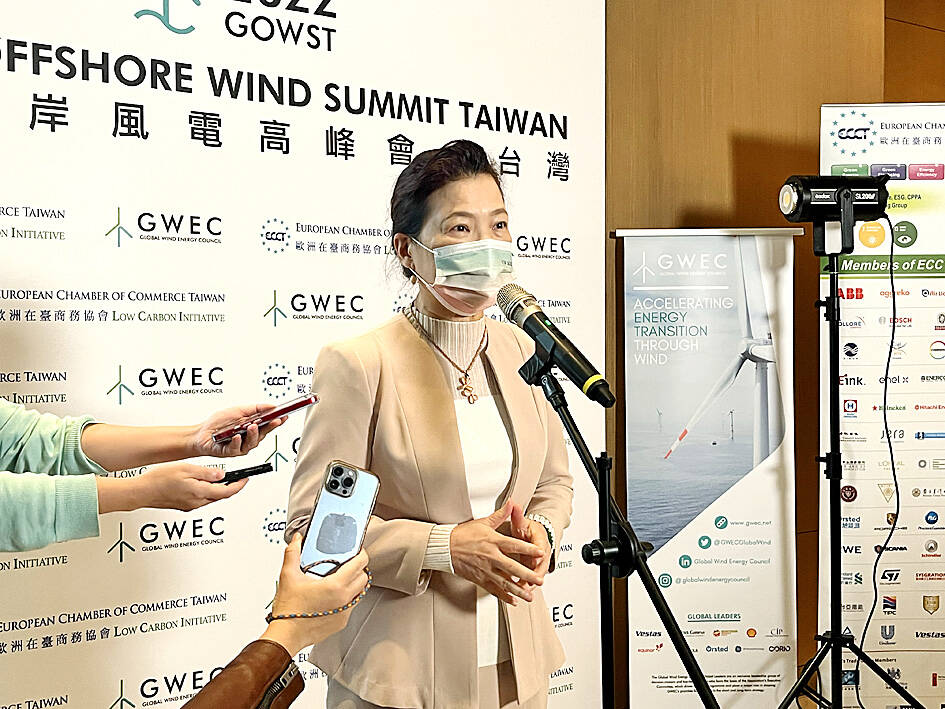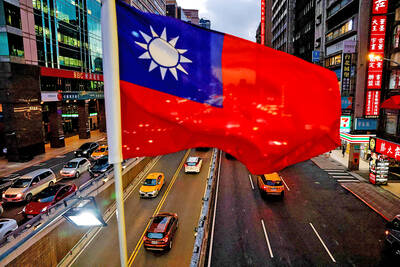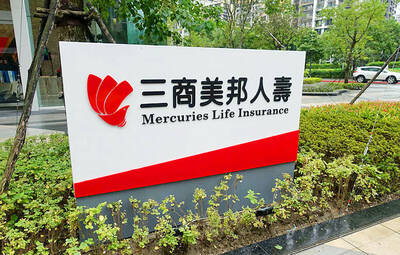Taiwan would make rapid headway in the development of offshore wind energy with the installation of 157 wind turbines by the end of this year, government officials said yesterday.
Taiwan’s second-phase wind energy plan is under way, Vice Premier Shen Jong-chin (沈榮津) told a forum on offshore wind energy organized by the European Chamber of Commerce Taiwan (ECCT) and the Global Wind Energy Council.
The government looks forward to working with European companies as they possess knowledge and experience in the field, Shen said.

Photo: Liao Chia-ning, Taipei Times
The development of offshore wind energy is part of Taiwan’s efforts to achieve net zero carbon emissions by 2050, he added.
As of last year, Taiwan had completed two pilot offshore wind farms featuring 43 wind turbines, and the number is expected to reach 200 in late December, a major increase, Minister of Economic Affairs Wang Mei-hua (王美花) said.
The ministry has drawn up a third-phase development plan and would release 1.5 gigawatts of capacity each year to ensure stable market demand and support the building of infrastructure, the supply chain and acquisition of talent, Wang said.
The government would remain open-minded and supportive in the development of wind energy sources, Wang added.
ECCT vice chairman Giuseppe Izzo said the ever-increasing threats posed by climate change and the need for energy security make Taiwan’s energy transformation even more urgent than before.
Although significant progress has been made in Taiwan’s offshore wind market in the development of port infrastructure, supply chain localization and the installation of offshore wind turbines, “there are always challenges to overcome, with such opportunities in a new market,” Izzo said.
Over the past year, Taiwan has seen its first offshore wind project start commercial operations and higher long-term capacity targets were announced, but progress has been hampered by regulatory and logistical issues, the ECCT said.
The chamber organized the forum for a fourth year to help examine the complexities of this promising new market and provide an update on its status, the ECCT said.
By adopting the right strategies and working with ECCT members, Taiwan would be able to reach its offshore wind energy targets, boost energy security and advance toward net zero emissions by 2050, it said.

France cannot afford to ignore the third credit-rating reduction in less than a year, French Minister of Finance Roland Lescure said. “Three agencies have downgraded us and we can’t ignore this cloud,” he told Franceinfo on Saturday, speaking just hours after S&P lowered his country’s credit rating to “A+” from “AA-” in an unscheduled move. “Fundamentally, it’s an additional cloud to a weather forecast that was already pretty gray. It’s a call for lucidity and responsibility,” he said, adding that this is “a call to be serious.” The credit assessor’s move means France has lost its double-A rating at two of the

AI BOOST: Although Taiwan’s reliance on Chinese rare earth elements is limited, it could face indirect impacts from supply issues and price volatility, an economist said DBS Bank Ltd (星展銀行) has sharply raised its forecast for Taiwan’s economic growth this year to 5.6 percent, citing stronger-than-expected exports and investment linked to artificial intelligence (AI), as it said that the current momentum could peak soon. The acceleration of the global AI race has fueled a surge in Taiwan’s AI-related capital spending and exports of information and communications technology (ICT) products, which have been key drivers of growth this year. “We have revised our GDP forecast for Taiwan upward to 5.6 percent from 4 percent, an upgrade that mainly reflects stronger-than-expected AI-related exports and investment in the third

Mercuries Life Insurance Co (三商美邦人壽) shares surged to a seven-month high this week after local media reported that E.Sun Financial Holding Co (玉山金控) had outbid CTBC Financial Holding Co (中信金控) in the financially strained insurer’s ongoing sale process. Shares of the mid-sized life insurer climbed 5.8 percent this week to NT$6.72, extending a nearly 18 percent rally over the past month, as investors bet on the likelihood of an impending takeover. The final round of bidding closed on Thursday, marking a critical step in the 32-year-old insurer’s search for a buyer after years of struggling to meet capital adequacy requirements. Local media reports

RARE EARTHS: The call between the US Treasury Secretary and his Chinese counterpart came as Washington sought to rally G7 partners in response to China’s export controls China and the US on Saturday agreed to conduct another round of trade negotiations in the coming week, as the world’s two biggest economies seek to avoid another damaging tit-for-tat tariff battle. Beijing last week announced sweeping controls on the critical rare earths industry, prompting US President Donald Trump to threaten 100 percent tariffs on imports from China in retaliation. Trump had also threatened to cancel his expected meeting with Chinese President Xi Jinping (習近平) in South Korea later this month on the sidelines of the APEC summit. In the latest indication of efforts to resolve their dispute, Chinese state media reported that